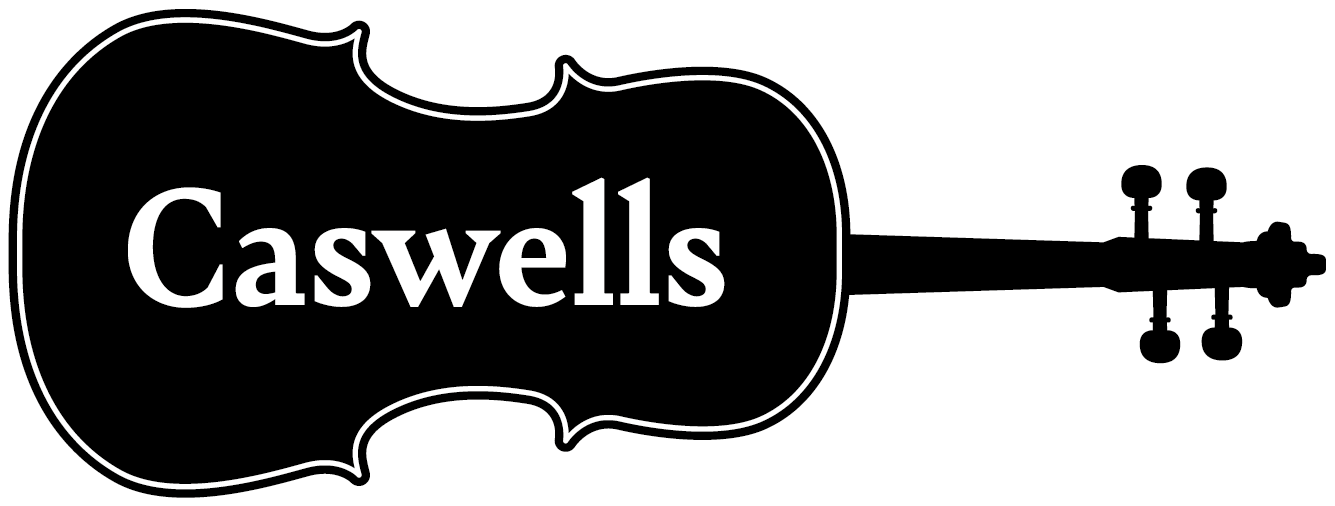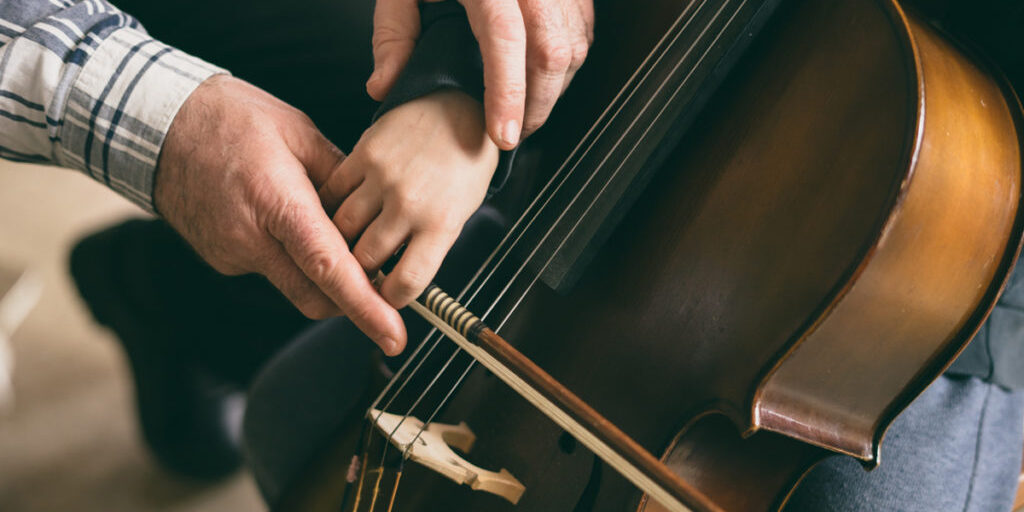The cello has definitely stolen the spotlight this year following Sheku Kenneh-Mason’s now-world-famous cello solo at the royal wedding, which has no doubt inspired many musicians to try their hand at playing the cello. We know the cello requires a significant investment of time and effort, so we’ve put together a comprehensive guide to everything you need to know about the cello before you make that investment.
What is a cello?
The cello is the tenor voice of the violin family, it shares this family with the violin, viola, and double bass. The cello is larger than the violin and viola, but smaller than the double-bass and is the second-lowest instrument within the violin family.
The cello first emerged in the early 16th century, along with many other instruments of the violin family. The oldest surviving cellos were made by Andrea Amati, accepted by many as the father of the violin family that we know and love today. Tuned in perfect fifths, the sound of the cello is described as a mellow, dark, and powerful sound, easily distinguishable from other instruments in an orchestra.

What is a cello made from?
A typical cello is made from carved wood, usually spruce and maple. It features four strings, historically these were made of catgut (sheep or goat intestines), however, most modern strings are made from wound metal over a core of gut, nylon or steel. A variety of metal strings are available such as steel, bronze, nickel, aluminium, and silver. Cellists can achieve a specific desired sound by using a combination of different strings. While traditional catgut strings are still available today, they are not advised for beginner students due to the fact that they are considered more difficult to play.
At Caswell’s, we offer an expansive range of cello strings ideal for all different levels and made from a variety of different materials.
Is the cello difficult to learn?
While all string instruments come with unique difficulties, many players of both the violin and the cello argue that the cello is easier to play due to its more natural position. It’s worth noting that there are proportionally fewer cellists than violinists. For this reason, there is a greater demand, and arguably more opportunities, for cellists, making the time investment well worthwhile.

What should you look for in a cello?
When looking for the cello that is right for you there is a number of key qualities you need to take into consideration; size, level, comfort, quality, and set-up.
- Size – Most adults will play on a 4/4 size cello (48 inches) while smaller ¾ cellos are usually for older children, teenagers or smaller adults. The size of the cello will slightly affect the sound, but the most important thing is that you select a cello that feels like a natural and comfortable fit for you. You will learn faster and play better if you feel comfortable with the cello you have chosen.
- Level – There’s little point in buying the highest range cello that is available when you are starting out. You can still get a good quality cello without breaking your bank. A less expensive cello may have the fingerboard and pegs dyed to look ebony rather than being made with actual ebony, but this will be fine for a beginner. Once you are more advanced you can then try out various higher-end cellos to see what you prefer before purchasing.
- Quality – All good quality cellos will be hand-carved from spruce and maple wood. Higher-end cellos will usually feature a fingerboard and pegs made from ebony rather than dyed hardwoods… The cello should have an adjustable endpin. The soundpost should be properly positioned inside the cello. The nut, at the top end of the fingerboard, with the bridge should hold the strings in perfect alignment and the exact height from the fingerboard in order to maximise tone and playability. The tailpiece can be made of plastic, metal or wood.
- Set-up – We ensure every instrument from entry-level student cellos through to professional instruments are correctly set up. This includes, but is not limited to, shaping and cutting the bridge, fitting the pegs, and checking the fingerboard and positioning the soundpost. Correct set-up ensures optimum performance and playability.
For beginners, we recommend the Stentor Student I Outfit, a favourite of music teachers across the board. If possible we recommend that you come in store to try out the cellos in person to find which cello is the best fit for you. At Caswell’s you are always welcome to pop in our music store in Brackley, our friendly and experienced staff can help advise which cello is best for you based on budget, size, and level you will be playing at.
Should you buy or rent your first cello?
Buying a cello is almost certainly a much more cost-effective approach in the long run and if you are suitably motivated and experienced then this is a good option. However, it may be worth holding off investing in a cello if you are unsure. If this is your first time playing an instrument it’s worth considering renting a cello until you are comfortable playing and feel confident and prepared to invest in a good quality cello to play permanently. Contact our team to find out more about our cello rental options.
What other accessories will you need?
There are many cello accessories that you can purchase with your first cello, but the most essential items you will need will normally come included in the Cello outfit, such as:
- Cello Bow – A good quality bow will have a good weight to it, a balance point slightly closer to the tip, and good flexibility. It’s just as important to try out the bow as it is to try out the cello. If you already have your cello and can’t make it to the store, we offer a bow trial service where you can order up to 4 bows to try out and purchase the one that you prefer.
- Cello Bag – If you’re investing in an upgraded cello then it’s crucial to invest in a good cello bag or a hard case that will ensure it can be stored and transported without sustaining any damage which will be costly to repair. The Hidersine Cello Case is an affordable solid case that can offer effective protection for your first cello.
- Bow Rosin – Rosin is used on the bow hairs in order to make them grip the cello strings, producing a clear sound. For beginners, we recommend our best selling rosin for cello, Hidersine Cello Rosin.
- Cello Floor Stop – A floor stop will hold your cello in place without slipping while you are playing, holding the cello’s endpin in its centre. We recommend the simple, no-nonsense Black Hole Cello Endpin Stop for beginners.

Should you invest in instrument insurance?
Absolutely! Nothing could be worse for a beginner than to invest in a fine quality cello, only for it to be accidentally damaged or for it to be stolen or lost. Repairs can be costly, as can be replacing stolen or lost instruments. Don’t take the risk and invest in instrument insurance as soon as you’ve purchased your cello.
Tips from Professional Players
We contacted Toscana Strings for their advice on what you need to know before starting the cello, and their talented cellist, Heather Dunne, sent us the following advice:
- Make sure you invest in a rock stop/spike support. Posture is important and if your cello is constantly sliding away from you, you’re going to struggle to maintain a relaxed, decent posture.
- When practising, always make sure you have a goal in mind, then practice however much you feel you need to achieve this goal whether that’s a 5-minute session or an hour.
- Shorter, more regular practice is more effective than longer less frequent practice. Even if you practice for 20 minutes each day, this will be better than relying on a once-a-week hour-long session.
- For adult learners little and often is especially effective, let your family know that this is your “practice time” so you can have a bit of uninterrupted time each day for practice.
- Don’t get a cheap cello from eBay! Invest in a well set up the cello and good quality cello strings. You’re not going to want to play an instrument that sounds horrible or is difficult to play.
- Any string instrument is difficult to learn, our brains are apparently larger than other musicians! I think it’s because there are so many things going on in the grey cells when playing a string instrument. If you want instant gratification then the cello is not for you, however, if you are willing to put in the time and effort you will be rewarded as the cello is the most beautiful instrument.
Summary
Make sure you take the time to choose the cello that is best for you. Don’t be afraid to come into the store for advice and to try out a number of cellos. There are a lot of cheap cellos on the market which will be of poor quality and uncomfortable to play. Sadly this type of experience can make students feel put off before even starting lessons. On the other hand, a carefully selected cello combined with dedication, practice, and a passion for perfection, is a recipe for success!
If you have any further questions regarding purchasing your first cello or learning the cello, email sales@caswellsstrings.com or call 01280 707 140 to speak to the Caswell’s team today. Alternatively, you visit us in-store from 8:00 am – 5:00 pm, Mon – Fri.




